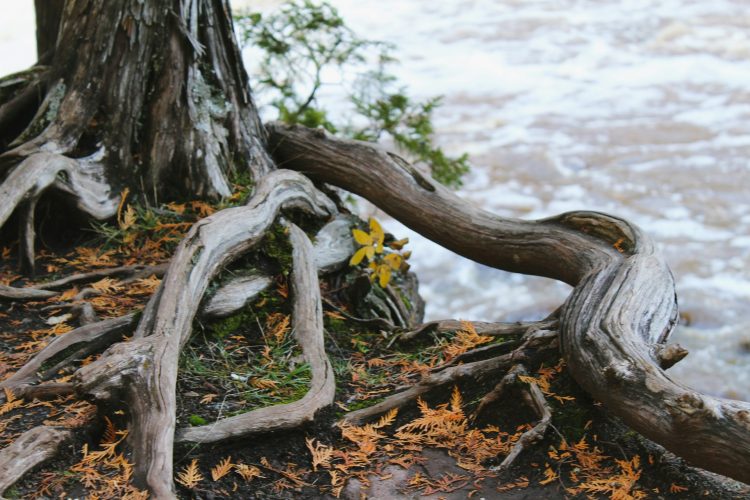Owning a home comes with its share of responsibilities, not least of which is maintaining the infrastructure that keeps everything running smoothly. When it comes to underground plumbing, the sudden discovery of tree roots in your sewer line can be a costly and stressful issue to deal with.
In this comprehensive guide tailored for Hamilton homeowners, we’ll explore the telltale signs of tree root intrusion, how these silent invaders breach your pipes, and most crucially, what steps you can take to proactively prevent and address this hidden menace.
Why Tree Roots and Sewer Lines Don’t Mix
The first step in combating tree roots in your sewer line is understanding why and how they infiltrate your plumbing. Sewer lines can be a feast for a tree’s root system, providing the perfect blend of water, oxygen, and nutrients.
But as trees’ roots grow, they can exert significant force on your pipes, causing cracks and joints to split. This can lead to blockages and leaks, with severe consequences such as structural damage to your home if the invasion isn’t caught in time.
The Damage They Do
Roots are not only annoying intruders; they are also deceptively powerful. A single root hair can easily work its way into the tiniest of cracks and, with the help of thousands of its friends, can grow into a full-fledged obstruction within your sewer line in no time. This can lead to regular backups, slow drainage, and in extreme cases, total system failure.
Recognizing the Intrusion
Tree roots don’t burst out of the ground shouting for attention; rather, they silently occupy and disrupt our underground network of pipes. How do you know when roots have infiltrated your sewer line? The signs can be subtle at first but grow more apparent as the problem worsens.
Early Warning Signs
- Slow drains in various parts of the house
- Rising toilet water levels
- Gurgling noises when the toilet is flushed
- Foul odors entering your home
- Sudden increases in your water bill
If you notice any of these signs, it’s essential to investigate further, as early detection is key to minimizing the damage and cost of repair.
The Science of Root Entry
Understanding how tree roots infiltrate sewer lines is crucial in devising a plan of defense. Trees have a natural inclination to seek out water, which makes the presence of a crack in a sewer pipe an irresistible draw for their roots.
The Path of Least Resistance
Cracks, loose joints, and fissures in your sewer line provide the perfect entry point for roots. Once inside, roots grow through a process called “hydrotropism,” where they follow the scent of water vapor and grow towards the moisture within your pipes. This can turn a small opening into a full-scale root invasion, causing obstructions and damage.
Tools for Detection
Detecting root intrusion early can save you from more significant problems down the line. Thankfully, there are tools and techniques at your disposal to uncover the root of the problem.
Video Camera Inspection
Professional plumbers can use a small, waterproof camera on a flexible rod to enter your pipeline. This allows them to see the exact condition of your sewer lines, including any root infiltration. It’s a non-invasive way to catch the issue before it escalates.
Diagnostic Tools
Advanced diagnostic tools, such as root sonar, can indicate the degree of root penetration. These tools help to assess the situation and plan the next steps for removal and repair, should it be necessary.
Keeping Roots at Bay
The good news is that there are preventive and treatment options available to keep tree roots in check.
Preventive Measures
Strategic planting and landscaping practices can prevent root-related sewer line problems before they start. When planting trees or shrubs, be mindful of their mature size and never plant them near utility lines or over the path of your sewer line.
Professional Treatments
If your sewer line is already under siege, professional plumbing services can carry out treatments like root cutting, using a mechanical auger to break up the infiltrated roots, or chemical solutions that can deter root growth without harming your trees.
Long-Term Maintenance
Once roots have been cleared from your sewer line, the battle isn’t over. Long-term maintenance is crucial to preventing regrowth and ensuring your system continues to function properly.
Establishing a Routine
Developing a regular maintenance routine, including inspections and cleanings, can help you stay one step ahead of any future root infiltration. Be particularly vigilant if you’ve had a root problem in the past, as this may be a sign of an underlying issue with your pipes that makes them particularly vulnerable.
Ongoing Care
In addition to routine inspections, consider using root barrier products or copper sulfate treatments to discourage root encroachment. Regularly monitor the trees and plants in your yard for signs of root growth or disturbance that might indicate a problem with your sewer line.
The impact of tree roots on your sewer line can be daunting, but with vigilance and proactive measures, you can maintain a healthy and unobstructed plumbing system. Remember, the key is early detection and decisive action.
Don’t wait for the problem to become unmanageable before you address it. Take the preventive steps, schedule regular professional inspections, and keep an eye out for the subtle signs that roots might be encroaching on your pipes. Your sewer line, and your home, will thank you for it.
If you suspect your sewer line has been compromised, don’t hesitate to act. Seek the assistance of a professional Hamilton plumber. And if you’ve had experience battling root intrusions in your sewer line, feel free to share your story in the comments. Sharing knowledge and experiences is one of the best ways to support one another in the endeavor of home ownership.









